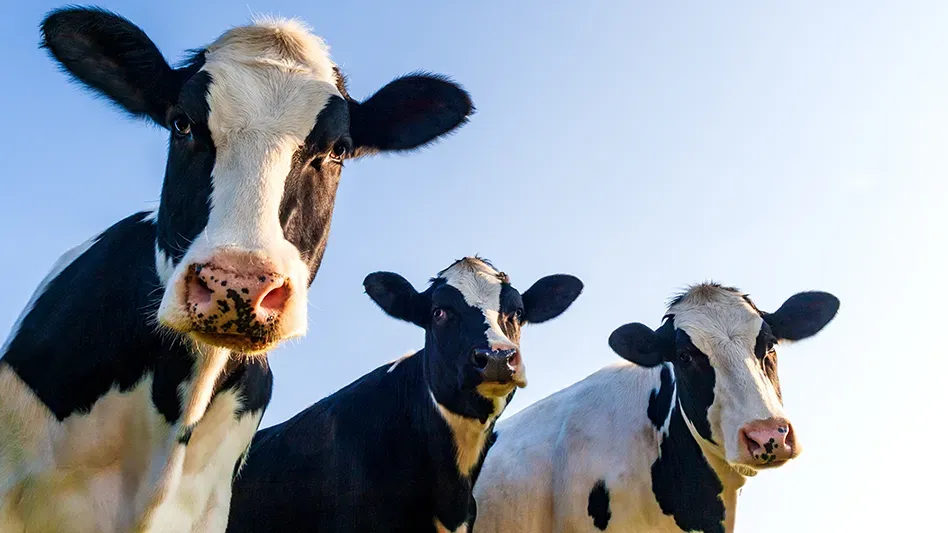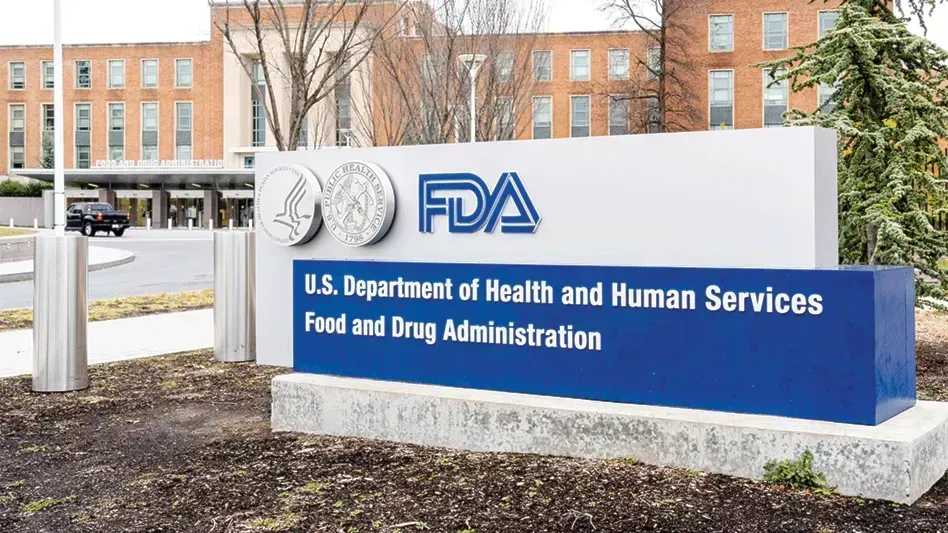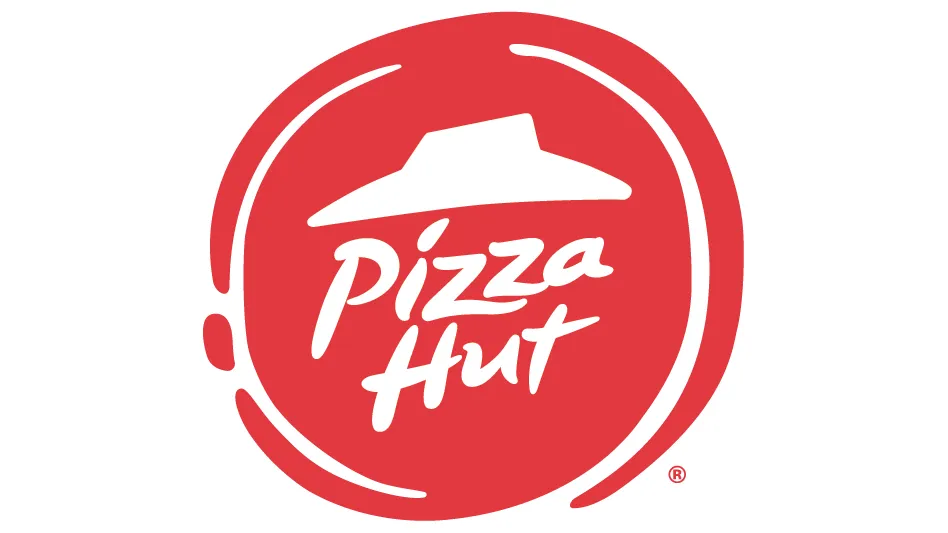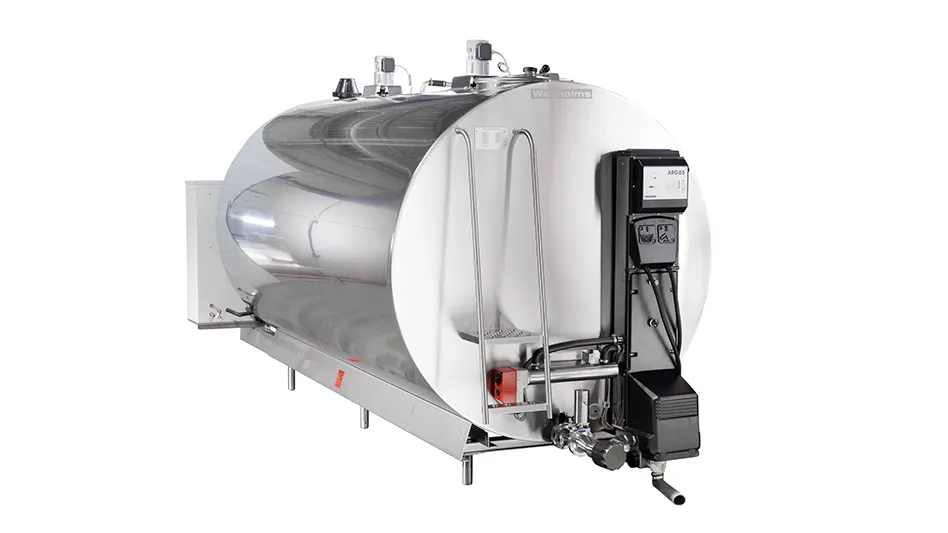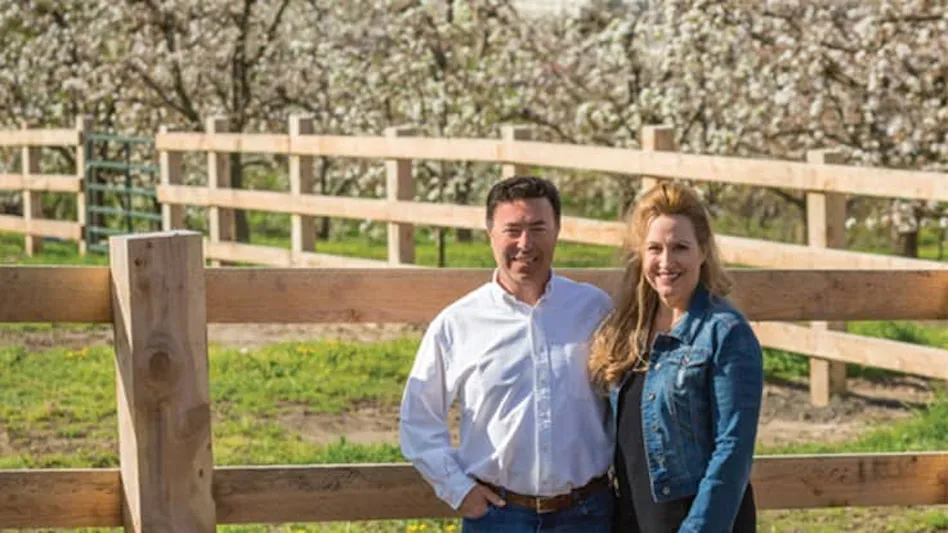
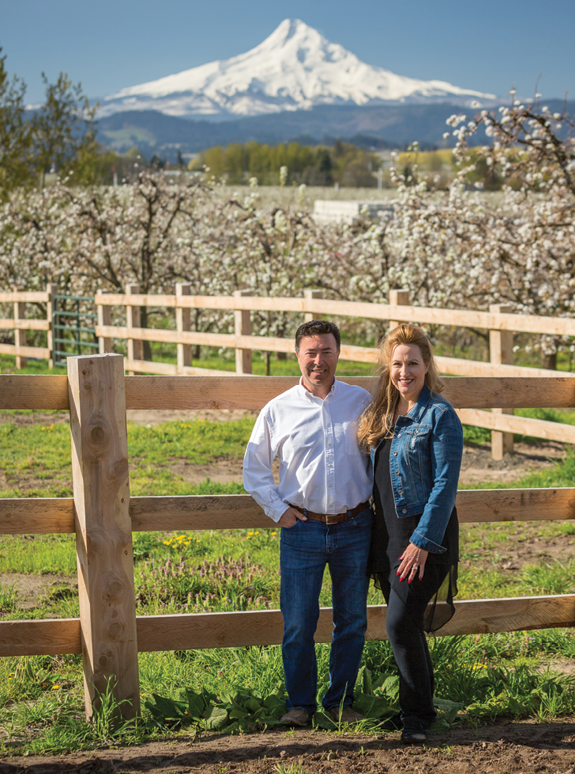
What images does the word “cider” evoke for you? If you are like most people, you picture fall leaves, cooling weather, and a generic gallon jug of hazy light-brown liquid. Or, perhaps, with the changing times, it is a chilled bottle or glass of the alcoholic “hard” cider that comes to mind.
It is that first image that Ryan’s Hood River Juice Company (HRJC) is working to change – and the second image that has opened up new markets for the Oregon-based cider producer.
HRJC produced more than 20 million gallons in 2016 and has more than 100 employees. Nearly all of its production goes to bulk juice, said Vice President of Sales and Marketing Jaime Guisto, but HRJC also produces regionally sold, Ryan’s-branded bottled juices – the product with which the Ryan family founded the company in 1979 (See sidebar Ashes to Roses, page 14). But whether discussing bulk or bottled product, the key to the company’s juices, and the primary focus of its food safety and quality practices, are its fresh, all-natural products. HRJC’s apple ciders have one ingredient: apples. Its cider and juice blends add spices or other fruits, such as pomegranate, but they retain the company’s all-natural standard.
While there is little in the way of federal definition for “natural,” it’d be hard to argue that the company’s products aren’t natural – they don’t filter their products or use any preservatives, additives, or processing aids, and all products are GMO free, gluten free, vegan, and certified kosher. HRJC also is organic certified through Oregon Tilth Certified Organic (OTCO), but the majority of juice is processed conventionally. “Organic apples are in high demand which makes sourcing organic apples for juice processing a real challenge,” said Quality Assurance Manager Laurie Brown.
HRJC’s quality control parameters focus on degrees brix (natural sugar), malic acid, pH, and a taste test. Ultimately it comes down to how the final product tastes, smells, and looks, with both food safety and quality maintained by using only good apples. “You have to start out with good apples to get good juice,” Brown said.
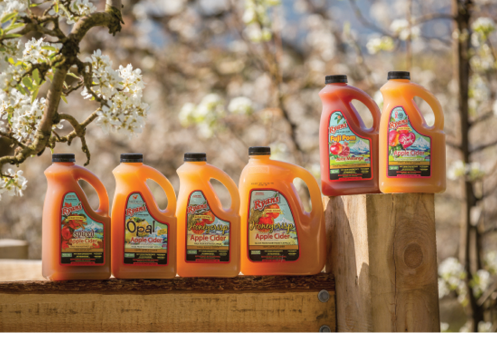
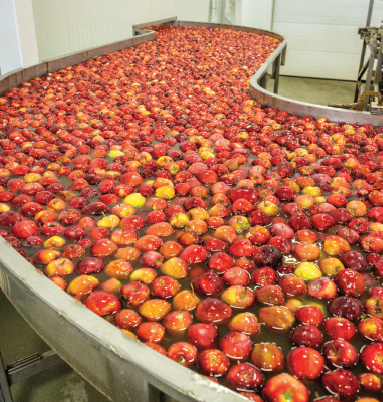
ONE BAD APPLE. The saying, “One bad apple can spoil the whole bunch,” is not just a saying. Patulin is a mycotoxin that is produced by fungi commonly found on apples; exposure to high levels can be a health hazard over time. High levels of patulin can occur in juice made from fallen or damaged apples that contain mold, rot, bruising, etc. According to FDA, even one rotten apple (containing more than 10,000 ppb patulin) used with 200 good apples can cause the resulting juice to exceed its patulin action level of 50 ppb. And because pasteurization does not destroy patulin, its presence in the extracted juice will carry through to the final product. This is why sourcing good fruit and sorting and inspecting the fruit during processing is so important.
Although pasteurization does not kill patulin, the process is effective against pathogens such as Listeria and E. coli that can cause contamination. Pasteurization, defined by FDA as “a heat treatment sufficient to destroy vegetative cells of pathogens,” is the key kill step for juices. While FDA does not strictly prohibit the sale of unpasteurized juices, the agency does advise against its consumption. All Ryan retail products are pasteurized, but HRJC does sell bulk juices as both pasteurized and unpasteurized, because many of its customers further process the juice. Additionally, HRJC has some separate standards for cold- and hot-filled bottled juices, with cold-fill requiring refrigeration from fill to consumption, while the process of hot-filled enables the bottling of a product that is shelf stable for about six to nine months as long as it is unopened. The company made the decision to produce more hot-filled bottles, not only for storage without refrigeration, but also to enable retail product placement in the produce department, because, said Sales and Marketing Administrator Kristy Long, “We are apples.”
Throughout the process, Brown said, “Juice HACCP is the foundation of our food safety management plan.” Well before the enactment of FSMA in 2011, FDA published strict, detailed regulations for the production of juice and the use of the term “juice” on product labels, with the publication of the Juice HACCP rule in 2001and the Labeling of Juice Products rule of 1998. Thus, because FDA requires juice processors to implement the HACCP approach to preventive controls, these manufacturers are exempt from the Preventive Controls rule of FSMA.

When she arrived, Brown said, the lab was simply a small sink with a titration column and pH meter. Brian Petros, now vice president of operations, wore many hats back then; trying to juggle the responsibilities of operations, food safety, and quality on his own, until the decision was made to hire a quality assurance manager. Today HRJC has a complete laboratory that was developed to be fully compliant with all requirements, and to be comfortable for the lab workers.
In fact, while large companies often require third-party testing of their suppliers, many of HRJC’s largest customers now accept some in-house results, Brown said, “because we have attained the reputation for being so consistently accurate.”
CIDER QUALITY. While there is no defined difference between apple juice and cider, it is generally accepted that juice is filtered (giving it its clear appearance), while cider is unfiltered, having less clarity. This is true of HRJC’s ciders which do not undergo any filtering, enabling it to maintain more of the full-bodied, true apple flavor. In addition, the juices contain no additives, preservatives, or processing aids. “It’s what we don’t do to our juice that makes it unique,” Brown said.
While recipe consistency is a fairly standard practice in much of the food industry, a precise recipe cannot be maintained when developing a product from fresh fruit with no additives, because the fruit is never exactly the same twice. Even given the same variety of apple, “You can have two different lots from two different growers and the apples will be different,” Brown said. Additionally, time of year, weather conditions, and other environmental factors can all influence the taste of the fruit.
Because of this, each batch of each product requires a unique blending. and taste tests enable as consistent a flavor as possible, with no product – bottled or bulk – shipped until Ryan, himself, tastes it, Guisto said. Production Manager David Carter conducts a taste test of incoming apples, determines how many bins of each will be needed to reach the specified flavor profile, then blends and tastes samples until it is right. Only after all this are the precise number of bins from each grower or lot dumped into the hopper. Fruit is brought into HRJC on a daily basis, and the company generally has about 3,000 bins of apples – enough for about a week’s worth of production. “David Carter really is our master blender,” Brown said.
The taste is also determined by the brix and malic acid tests conducted on the apples. Brix, measured in degrees, is the percent by weight of natural sugar in the juice which provides the sweetness of flavor, while malic acid is a natural substance found in fruits and vegetables that lends a tartness to the flavor. The determination of brix and malic acid of each delivery of apples is used to help create the blend for the desired profile.
While there are some limitations in the geographic distribution of fresh, all-natural juice, today’s technology enables the company to meet greater demands and fulfill requirements of major producers who use its bulk juices as an ingredient. For the bottled products, the hot-filled process increases its non-refrigerated shelf stability, enabling further distribution as well. Currently the company provides bulk product across the U.S., while its bottled juices are distributed regionally.
EXTENDING THE SEASON. But that regional distribution is gradually being increased due to Ryan’s new category development. “Cider is a very stagnant category; there is not much happening with it,” Guisto said. And because consumers have historically seen it as a fall beverage, Ryan’s had always sold the majority of its production in traditional gallon jugs during the three months of fall. So, just last year, the company decided to take a leap to bring year-round life to cider by creating different varieties, updating its branding, packaging the ciders in higher quality half-gallon jugs, and offering the refrigerated fresh bottles along with a shelf-stable option to be placed in the produce section. By doing this, Guisto said, Ryan’s brand was able to increase its sales, selling season, and distribution, with bottled ciders now expanded from just Washington and Oregon to 15 states.
The evolution of hard cider also has been a boon for the company. Seen as one of the fastest growing segments of the adult beverage industry, hard cider has grown by more than 70% in each of the past two years, according to The Growler. The company now has more than 70 hard-cider production customers, Brown said, adding, “Ten years ago, I would never have believed that the hard-cider industry could grow that much.”
Additionally, Guisto said, “It is exciting to be a part of the growth of the hard-cider industry. Ciders are becoming a lot more popular as a year-round product because of that growth.” And as interest has grown in the possible health benefits of apple cider vinegar, HRJC has had an increase in bulk raw juice sales to the vinegar industry as well.
THE PROCESS. HRJC has two production plants, both of which produce the same products through the same process with the same quality and safety checks, except that Plant 2, which just began operation in September 2015, has more automated equipment. The new plant added additional pressing capacity, said Vice President of Operations Brian Petros. “Everything got replicated in Plant 2, but it is newer and more modern.”
Everything except the bottling line, Ryan added. “We use the original bottler, but we are working with a customer to put in a new fully automated line.” HRJC regularly partners with suppliers and customers on initiatives, he said. “Too many companies try to keep thing too protected, but when you’re talking about customers and suppliers, transparency is important.”
“As a general business model, transparency has been at the core since day one,” Petros added. Customers regularly visit the plant to see the process, conduct joint R&D, and work together. And, along with its new bottling line, the company is developing a new master plan. The old plan is only five years old, he said, “but it’s already outdated. That’s how fast things are moving around here.”
And that partnering has been beneficial in many ways. “We’ve had a lot of help from our customers, both big and small,” Petros said. “They have helped us and pushed us, and driven us to get better,” with the new bottling line as just one example.
The process begins with the delivery of apples in orchard bins:
- 1. Into the Hopper. Pre-determined bins of apples, as selected in the blend recipe stage, are dumped into the hopper, which then empties onto a water bath which flows to the sorting belt. The water washes the apples and enables gentle handling of the sensitive fruit.
- 2. Sorting. From the belt, workers cull any bad apples, leaves, sticks, and other debris. The belt can be sped up or slowed down to enable complete culling of the fruit – or it can be completely stopped if necessary. Then the good apples are washed with rotating brushes and carried upward to be dropped down into the apple mill where the apples are ground up and await pressing.
- 3. Press. In Plant 1, HRJC has a “rack-and-frame style apple press” which operates just like an old-style cider press – but on a less manual, much larger scale. The ground apples are pumped into the press and squeezed, to extract as much of the juice as possible.
- 4. Pasteurization. Once pressed, the cider is flash pasteurized then pumped to bulk storage. If the customer has requested raw juice, the pasteurization step is bypassed.
- 5. Storage. While awaiting results of quality and food safety checks, the juice is held in one of eight silos. An additional four silos are to be installed this year. Once the juice has passed all tests, it is released for bottling or shipping.
- 6. Bottling. The hot-fill bottling process produces a shelf-stable product, while the cold-fill provides a fresh cold-case product for retail.
- 7. Transportation. The company’s bulk product is cold-filled and transported by its subsidiary company, Little King Transportation. “The juice industry has strict guidelines on tankers and how to wash them,” Brown said. “We are the only Juice Products Association-approved tanker-wash facility in Oregon, so this gives us a big edge.” In anticipation of FSMA’s transportation rule, HRJC also has invested in stainless steel trailers used for transportation of the apple pulp for animal feed.

CULTURE. But with all these standards, audits, and certifications, what really makes HRJC successful is its people – both those in the plant and its partners up and down the supply chain, Ryan said. In 2009, Ryan was named Ernst & Young’s Northwest Entrepreneur of the Year, which he accepted on behalf of the entire company. As such he took his entire management team to the awards ceremony – “because it really reflects on them,” he said. “I think that it is a great inspiration for small business owners that get nominated to inspire the team and make it soar to new levels,” he said.
“No business owner, no coach, no warrior wins on their own.”
The author is editor of QA magazine. She can be reached at llupo@gie.net.
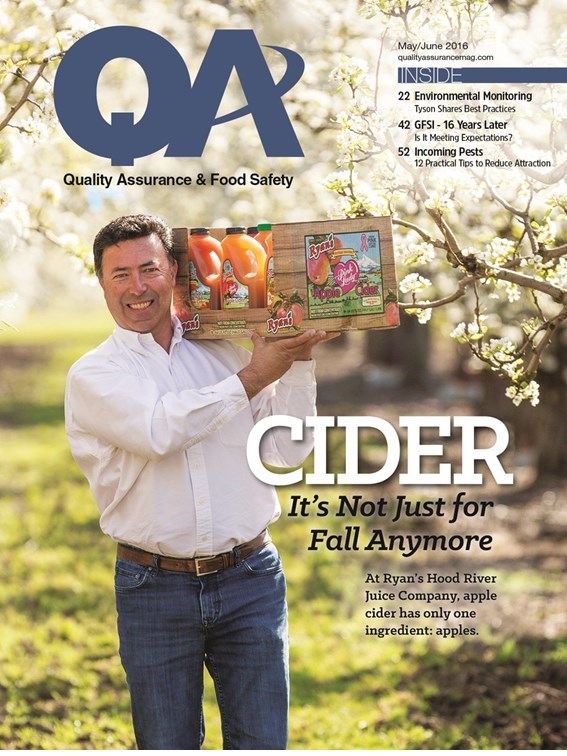
Explore the June 2016 Issue
Check out more from this issue and find you next story to read.
Latest from Quality Assurance & Food Safety
- Food Safety Summit Keynote Focuses on Food Safety Leadership
- FDA Publishes Landmark Final Rule to Enhance the Safety of Agricultural Water
- The Wendy's Company Reports 2023 Corporate Responsibility Progress
- Local Bounti Opens New Controlled Environment Agriculture Facility
- Tröegs Partners with Patagonia Provisions to Introduce Kernza Lager
- Neogen Launches New Molecular Method for Detection of Two Salmonella Serotypes
- Standard Meat Company Appoints Keith Blanks as Chief Commercial Officer
- USDA Finalizes Policy to Protect Consumers from Salmonella in Raw Breaded Stuffed Chicken Products

